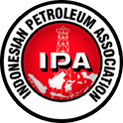Publications
Structural control on source rock development and thermal maturity in the Ardjuna basin, offshore northwest Java, Indonesia
Proceedings Title : Proc. Indon. Petrol. Assoc., International Conference on Petroleum Systems of SE Asia and Australasia, 1997
The Ardjuna Basin is one of a series of basins along the southern edge of the Sunda craton that originated during a major Eocene-Oligocene period of extension. It is located in the central part of the Offshore Northwest Java (ONWJ) contract area, approximately 100 km northeast of Jakarta, Indonesia . The basin incorporates a major source kitchen for hydrocarbons with at least 2.8 BBO and 5 TCFG discovered to date in the Ardjuna area. The area is divided into three sub-basins: North, Central, and South. The Northern sub-basin, 200 km2 in area, is formed as a single half-graben bounded to the east by a N-S to NE-SW down-to-the-west normal fault. The Central sub-basin, 8 00 km 2 in area, consists of numerous small half-graben systems. The Southern sub-basin, 400 km2 in area, is a single half-graben bounded to the east by a NE-SW down-to-the-west normal fault, and to the north by a NW-SE down-to• the-south normal fault. The Southern sub-basin contains the thickest sedimentary pile (~14,000 ft in the axis), followed by the Central (~10,000 ft) and Northern (~9000 ft) sub-basins. Source rock samples obtained from twenty eight wells were used in this study. The primary source rocks in the ONWJ are coals and carbonaceous shales of the deltaic Upper Talang Akar Formation (DUTAF). Secondary source rocks are continental/lacustrine shales of the Lower Talang Akar Formation (LTAF). Measured temperatures taken from drill stem tests and log data of more than thirty wells were used to calibrate heat flow values in the area. Using ARCO's in-house basin modeling program (GENESIS
4), present day heat flow in the Ardjuna basin was found to range from 1.4 to 1.8 heat flow units. Cross plots of depth versus transformation ratio and depth versus temperature were generated to interpret hydrocarbon generation history from each sub-basin. This information was integrated with structural restorations of seven east-west seismic cross-sections at key periods during basin evolution (Figure 2). The results presented in this paper show how seismic interpretation, well correlations, and structural restorations, combined with stratigraphic and geochemical information, can be used to develop models for source rock deposition, maturation, and timing of hydrocarbon generation. This information was used to assess remaining hydrocarbon potential and relative prospectivity of each area for future exploration projects.
Log In as an IPA Member to Download
Publication for Free.
or
Purchase from AAPG Datapages.
